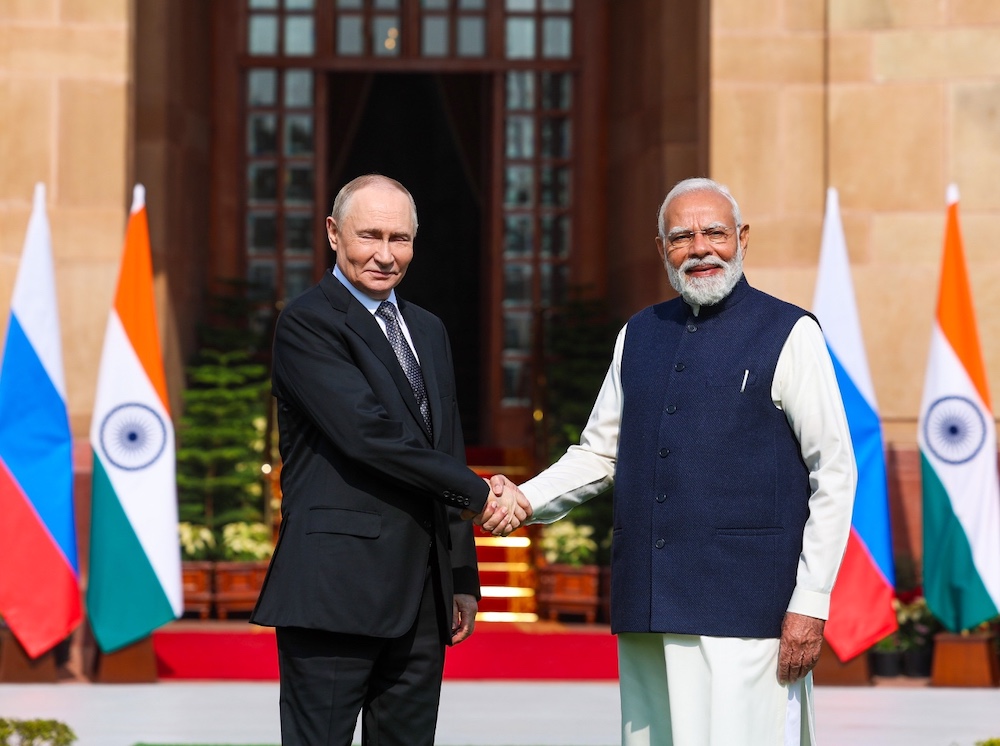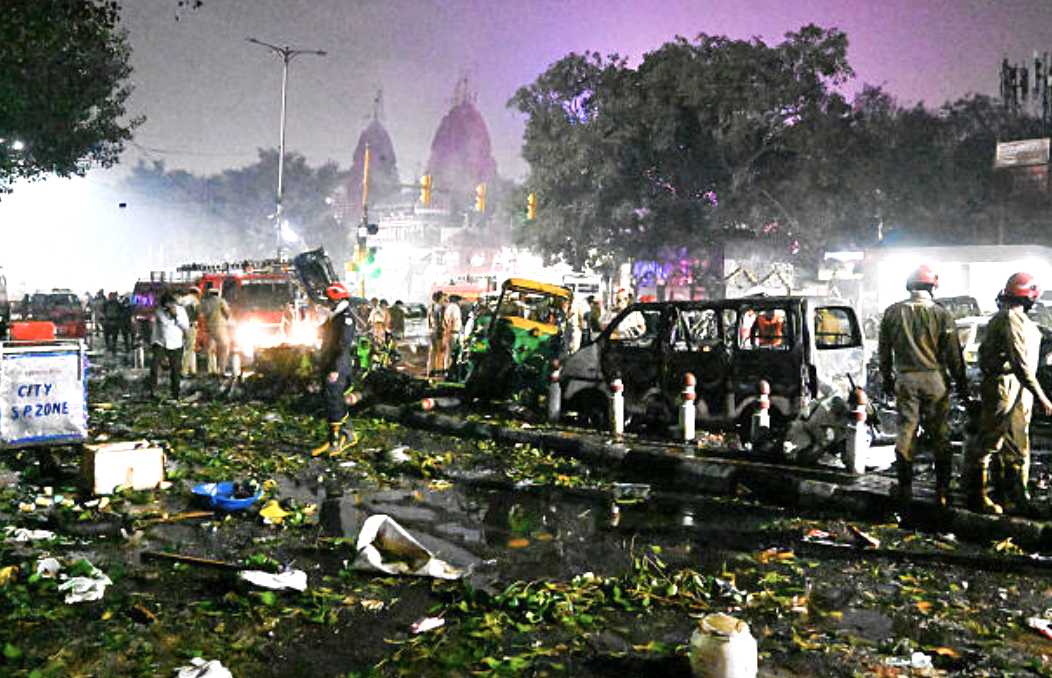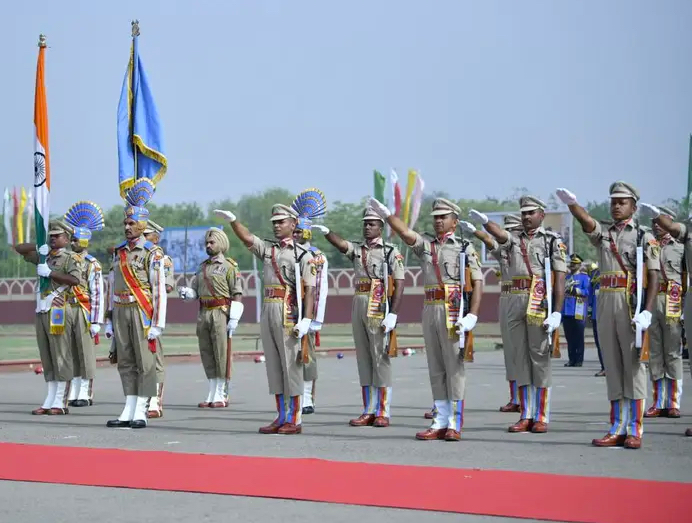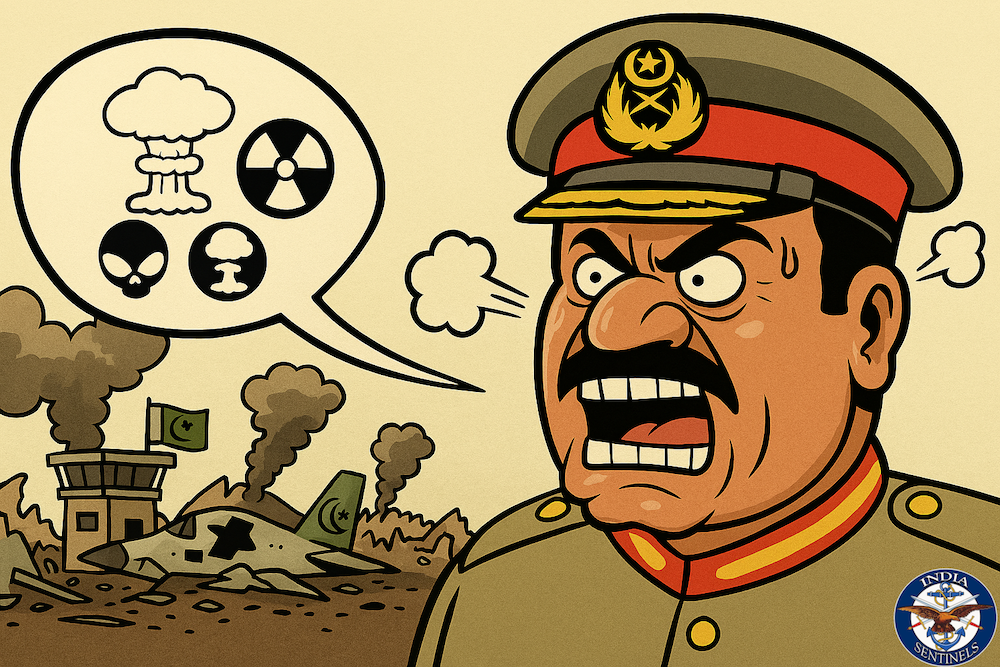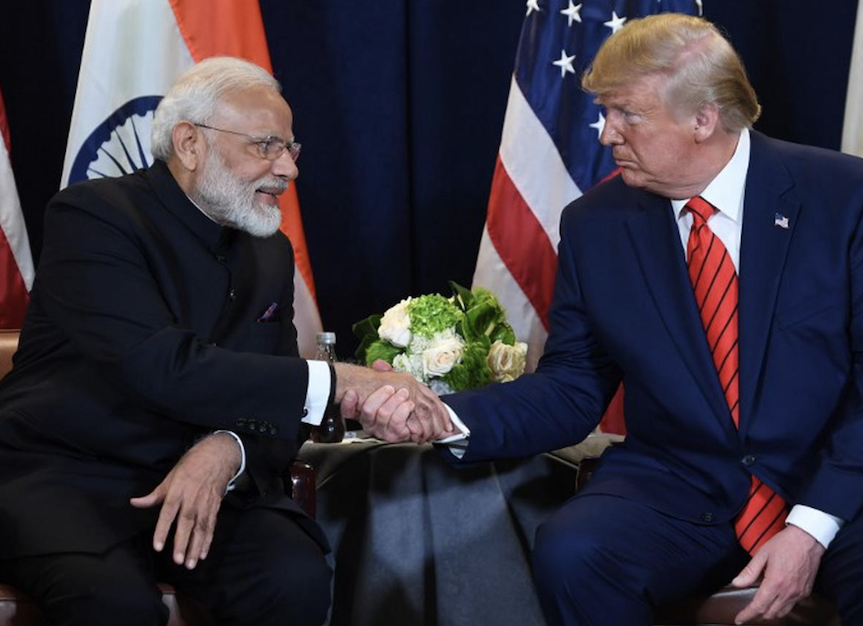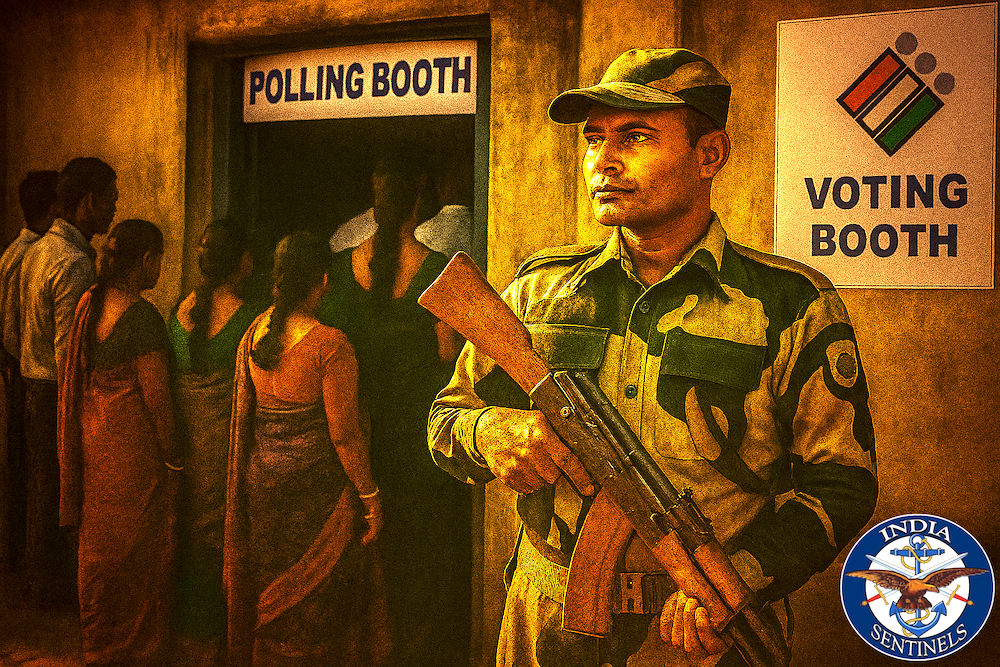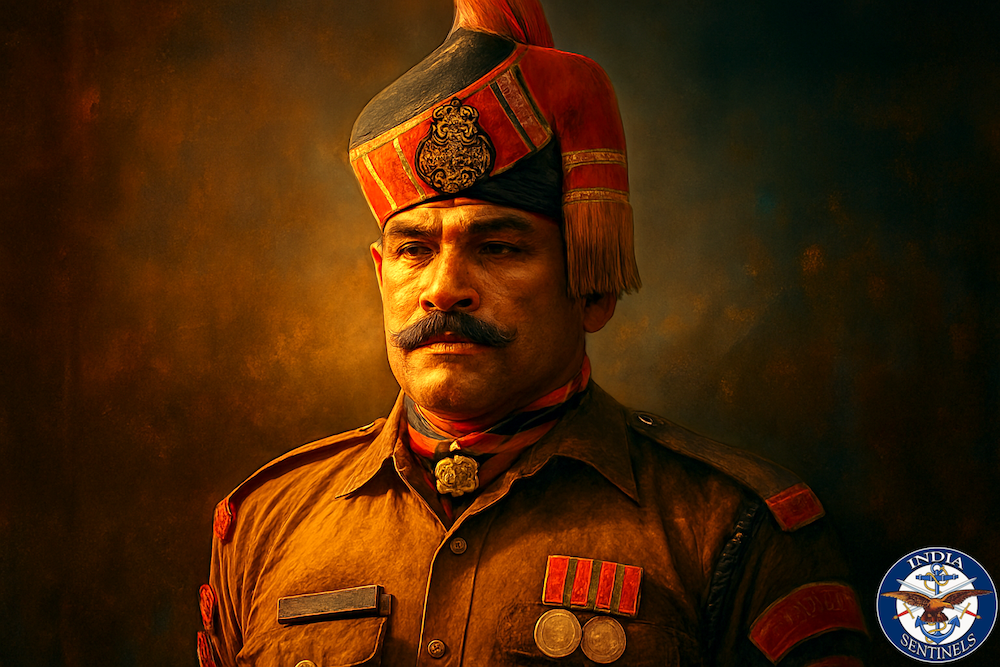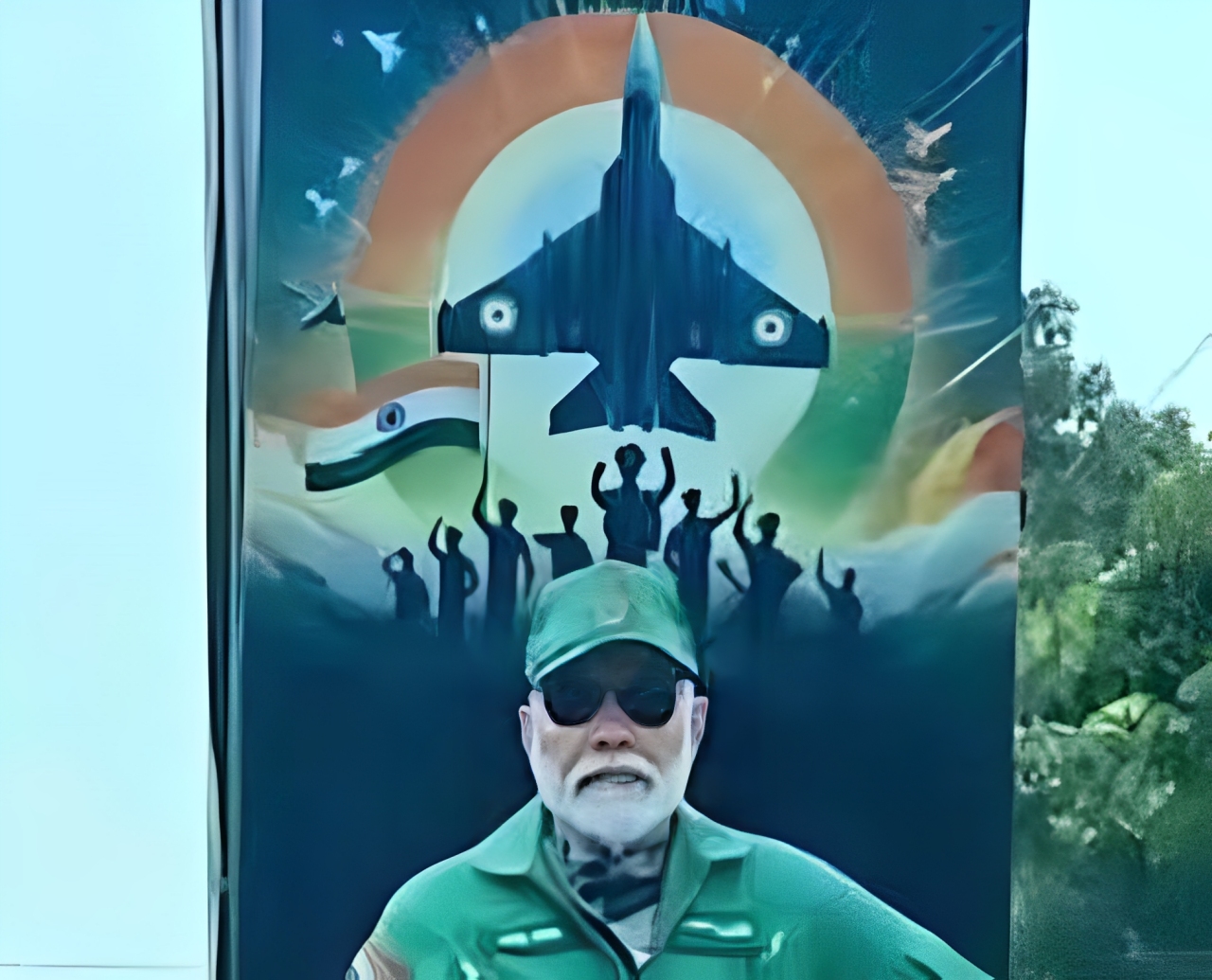 A political poster of Narendra Modi in an IAF flying overall.
A political poster of Narendra Modi in an IAF flying overall.
As a veteran military officer who has witnessed three consecutive generations of military tradition, I write with profound concern about two disturbing developments that threaten the institutional integrity of India’s armed forces. The government’s handling of gallantry awards for Operation Sindoor, coupled with the growing misuse of military uniforms by civilians, represents an alarming departure from established military customs that have served our democracy well since Independence.
For the first time in our military history, citations accompanying gallantry awards have been withheld from public scrutiny. This break with tradition, combined with an unprecedented inflation of honours, suggests our military institutions are being weaponized for political theatre rather than respected as professional organizations with their own time-tested standards.
Courage Shrouded in Secrecy
Operation Sindoor, launched on May 7, marked India’s military response to the devastating April 22 Pahalgam terror attack that claimed 26 civilian lives. The four-day conflict involved precision strikes against nine terrorist camps across Pakistan and Pakistan-occupied Kashmir, targeting Jaish-e-Mohammed, Lashkar-e-Taiba, and Hizbul Mujahideen infrastructure.
The operation demonstrated India’s impressive military capability. Our forces employed BrahMos cruise missiles, SCALP missiles, and AASM Hammer bombs delivered by Rafale jets with surgical precision. The Indian Air Force claimed six Pakistani aircraft destroyed, including a SAAB-2000 airborne early warning system eliminated by our S-400 air-defence system from 315 kilometres away – a remarkable feat of military engineering.
Intelligence reports suggest over 125 terrorists were neutralized. The operation concluded with a ceasefire agreement between the directors general of military operations of both countries on May 10. By any military standard, this represented a significant tactical and strategic success.
Yet the government’s presentation of this achievement has been deeply troubling.
Read also: Sudarshan Chakra Delusion – How India’s indigenous missile-defence shield could prove catastrophic
Awards Without Accountability
For Independence Day this year, the Modi government announced an extraordinary haul: 127 gallantry medals and 40 distinguished service awards related to Operation Sindoor. Nine Air Force officers received the Vir Chakra – India’s third-highest wartime gallantry award – including Group Captain Ranjeet Singh Sidhu, Group Captain Manish Arora, Group Captain Animesh Patni, and Group Captain Kunal Kalra, alongside several wing commanders, squadron leaders, and a flight lieutenant.
Four Army personnel and two Border Security Force officers also received the Vir Chakra. The distribution included four Kirti Chakras, 15 Vir Chakras, 16 Shaurya Chakras, and seven Sarvottam Yudh Seva Medals – more than double the total number of such medals awarded previously.
However, this ceremony marked an unprecedented departure from military tradition. For the first time since Independence, citations were withheld for gallantry awards – except by the BSF, which continued established practice by describing how its personnel “destroyed enemy surveillance cameras” and “neutralized drone attacks.”
The Army, Navy, and Air Force remained conspicuously silent about their awardees’ specific contributions, although the citations are just specific descriptions of individual acts of bravery of the specific conflict situation.
Furthermore, specific classified operational details are not mentioned in the citation,
Breaking Sacred Tradition
This represents more than administrative convenience – it shatters a sacred military tradition. Historically, gallantry awards came with detailed descriptions of specific acts of valour, allowing the public and military community to understand precisely why particular individuals earned recognition. These citations served multiple purposes: they honoured individual courage, educated future generations of officers about exemplary conduct, and maintained transparency between the military and the democracy it serves.
The absence of such documentation raises uncomfortable questions. What operational details are being concealed? Were casualties higher than publicly acknowledged? Are the awards genuine recognition of extraordinary valour, or political tools designed to project an image of overwhelming success?
As someone who has recommended officers for gallantry awards, I understand the delicate balance between operational security and public accountability. But never before has operational security been used to justify complete opacity about recognized acts of courage.
Politics of Military Glory
The Modi government’s handling of Operation Sindoor reveals troubling priorities. Prime Minister Narendra Modi’s Independence Day speech praised “brave warriors” who “punished enemies beyond imagination” while conspicuously avoiding mention of fallen soldiers by name or acknowledgement of their families. This selective narrative construction allows political leaders to claim credit for military success while deflecting responsibility for sacrifice.
The Red Fort was decorated with Operation Sindoor themes. The Air Force staged special flyovers featuring the operation’s logo. These theatrical displays mythologize military action while obscuring its human cost and complexity.
Most concerning is the revelation that nearly 15 per cent of operational time during Sindoor was spent countering fake narratives and disinformation. While information warfare is legitimate military concern, this emphasis on narrative control over factual transparency suggests political considerations influenced operational priorities.
Democratic Accountability Abandoned
The most troubling aspect is the abandonment of democratic accountability. The chief of defence staff’s revelations about Operation Sindoor casualties came during an interview in Singapore rather than through proper parliamentary channels. Key operational details were shared with foreign media before being disclosed to Parliament or press releases.
This represents a fundamental shift in civil-military relations. Historical precedent demonstrates the importance of transparency. The 1999 Kargil Review Committee was established three days after that conflict ended, with its report tabled in Parliament by February 2000. This tradition of accountability has been abandoned in favour of controlled narratives serving political rather than democratic purposes.
As Congress senior leader Jairam Ramesh noted, we now learn about our own military operations through foreign media rather than transparent domestic briefings. This undermines the principle that elected representatives should be informed about military actions taken in the nation’s name.
Uniform Controversy: Symbols Under Assault
Parallel to the awards controversy, the unauthorized use of military uniforms by civilians has reached alarming proportions. This extends beyond fashion modelling to broader civilian appropriation of military attire. The problem gained prominence when military veterans condemned the misuse of military uniforms for fashion purposes, specifically incidents where models wore hybrid uniforms combining elements from different services.
The issue has particular resonance given the prominent role of Colonel Sofiya Qureshi and Wing Commander Vyomika Singh, who made history as the first women who interacted with the media during a military conflict. These officers represent the professionalization and gender integration of our armed forces. Their subsequent appearance on the reality show “Kaun Banega Crorepati” while in uniform sparked additional controversy about appropriate protocol for serving officers.
Section 171 of the Indian Penal Code penalizes impersonation of public servants, while Section 140 explicitly bars civilians from wearing military uniforms or insignia. Yet enforcement remains inconsistent.
And guess, what happened? The model who was displaying the outrageous hybrid unform also insulted a key regiment of the Indian Army that is entrusted with communication interceptions and electronic surveillance. Now, look at the belt the model is wearing – the corps’ insignia has been inverted on its head!
Security Implications
The proliferation of military-style clothing creates serious operational security challenges. The 2016 Pathankot attack, 2015 Dinanagar assault, and other terrorist incidents involved militants using authentic-looking military uniforms to breach security perimeters. When uniforms become easily replicable disguises, they endanger not just those who wear them legitimately but the institutions they represent.
The combat uniform embodies more than clothing – it represents sacrifice, duty, and constitutional responsibility. Its misuse, whether by civilians or entertainment industry, dilutes the distinction between military and civilian roles fundamental to democratic governance.
The Army has intensified enforcement efforts, conducting raids with military intelligence and police to prevent unauthorized sale of patented combat uniforms. Legal action has been taken against individuals misusing military ranks and decorations. Yet the problem persists, reflecting broader cultural confusion about military symbolism.
Lessons from Professional Armies
Professional armies worldwide maintain strict protocols around awards and uniform usage precisely because these symbols matter. For example, the British Army’s Distinguished Conduct Medal and the United States Military’s Bronze Star come with detailed citations that balance operational security with public accountability. These citations become part of military heritage, inspiring future generations while maintaining transparency with civilian leadership.
Similarly, uniform regulations in professional armies are stringent and consistently enforced. The misuse of military symbols is treated as a serious offence against institutional integrity, not merely administrative inconvenience.
The Path Forward
True military heroism deserves recognition through proper channels with appropriate documentation. The courage displayed during Operation Sindoor – by pilots who flew deep strike missions, soldiers who engaged terrorist targets, officers who planned complex multi-domain operations – merits celebration through established military traditions, not political theatre.
The sanctity of military uniforms must be preserved through cultural education that helps civilians understand why these symbols matter. Legal enforcement alone is insufficient without broader societal appreciation of the distinction between military and civilian roles.
Most importantly, we must restore the democratic accountability that has governed civil-military relations since Independence. Military operations undertaken in the nation’s name require transparent oversight by elected representatives, not secretive briefings designed for political consumption.
Institutional Integrity at Stake
India’s military institutions have earned global respect through decades of professional service, peacekeeping operations, and defence of democratic values. This legacy requires rejecting the temptation to use military achievements as political capital and instead maintaining the transparency, accountability, and institutional integrity that democratic governance demands.
The current trajectory threatens to transform our armed forces from professional institutions serving the nation into political instruments serving particular leaders. This represents a fundamental betrayal of the oath every officer takes to defend the constitution rather than any individual or party.
As serving and veteran officers, we have remained silent too long about these dangerous developments. The politicization of military symbols, the inflation of honours without proper justification, and the abandonment of democratic accountability represent threats to institutional integrity that transcend party politics.
The true test of military leadership lies not in manipulating symbols for political gain but in upholding the principles that make those symbols worthy of respect. Our democracy depends on maintaining clear boundaries between military professionalism and political manipulation.
The time has come for military leadership to speak clearly about these boundaries before they are erased entirely.
Disclaimer: The views expressed in the article are the author’s own and don’t necessarily reflect the views of India Sentinels.
Follow us on social media for quick updates, new photos, videos, and more.
X: https://twitter.com/indiasentinels
Facebook: https://facebook.com/indiasentinels
Instagram: https://instagram.com/indiasentinels
YouTube: https://youtube.com/indiasentinels
© India Sentinels 2025-26


